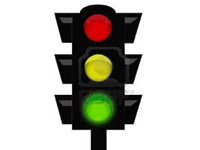
<h2><img class="alignright wp-image-519 size-full" style="margin: 5px; float: right;" src="https://www.schoolnews.co.nz/wp-content/uploads/2013/03/TRaffic_Lights.jpg" alt="TRaffic Lights" width="200" height="150" />Sets of mini traffic lights are beginning to control excessively noisy classrooms in primary schools.</h2>
<p>The Safe Sound Indicator flashes green, amber – then red to let pupils and teachers know when the din reaches intolerable levels. It has already proved a success at significantly cutting noise in child centres across New Zealand.</p>
<p>Now primary schools are following suit to reduce the risk of hearing loss for children and their teachers and create an improved learning environment. When the $292.50 devices were tried out in kindergartens, audio experts recorded some noise levels equivalent to a jet plane taking off.</p>
<p>The Safe Sound Indicator was developed over several years by the National Foundation for the Deaf from a concept by a 10-year-old New Plymouth girl, Jamie Fenton.</p>
<p><a class="wpil_keyword_link" href="https://www.schoolnews.co.nz/2015/10/new-chief-executive-for-education-council/" title="Chief executive" data-wpil-keyword-link="linked" target="_blank">Chief executive</a> of the Foundation for the Deaf, Louise Carroll, said the sound indicators were particularly effective in open-plan classrooms where noise could quickly reach uncomfortable levels. She said 1200 were now in use at childcare centres. They were also a valuable tool for reducing hearing damage.</p>

NZCER found generative AI tools are frequently used to support teaching and learning in primary…
The Ministry decision to discontinue a reading resource over kupu Māori has angered the sector…
NCEA was designed to broaden educational success, explains David Pomeroy from the University of Canterbury.
More than just a break from the classroom, a visit to a zoo or wildlife…
Without proper maintenance and care, trees can become a hazard. Are your trees in need…
Loneliness and social disconnection negatively impact wellbeing. A new WHO report finds teens feel the…
This website uses cookies.